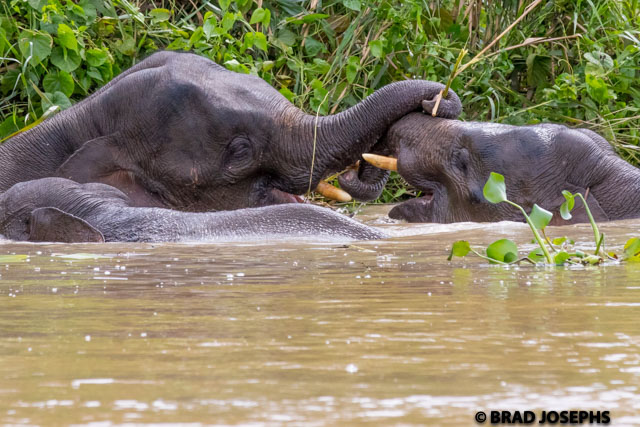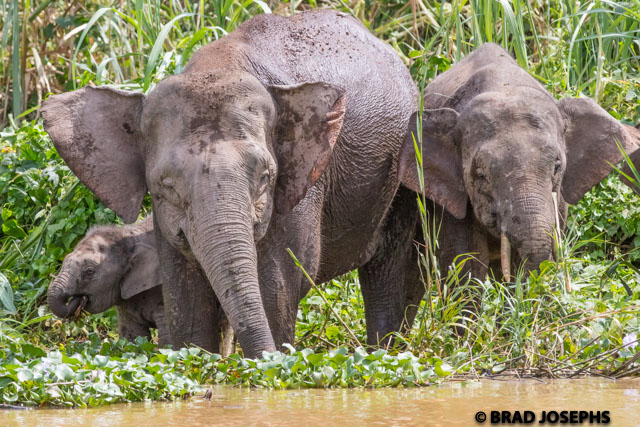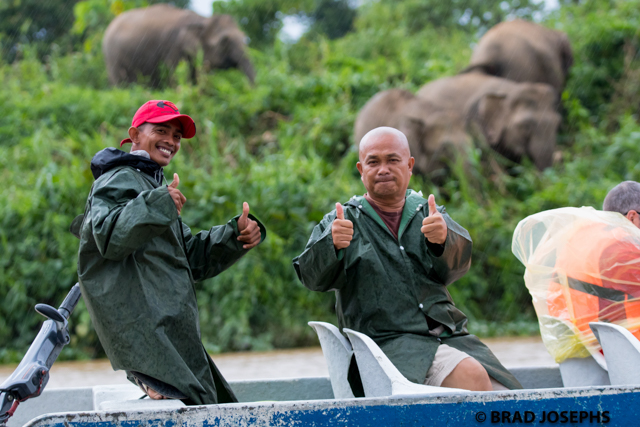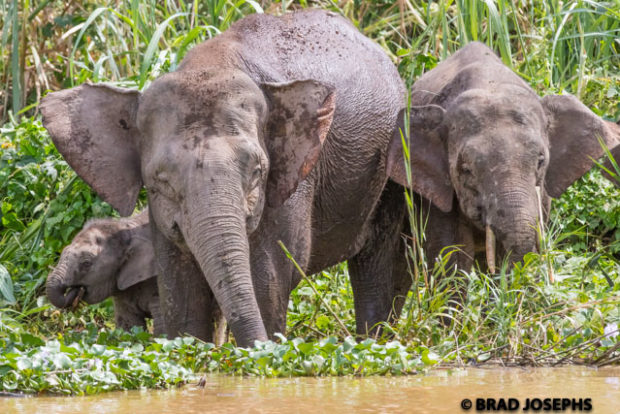
Two young male elephants wrestle in the muddy waters of the Kinabatangan River, Sabah, Malaysian Borneo.
While searching for the famous orangutan in the wilds of Borneo, many mysteries and surprises are revealed. In this Land Of The Giant Flying Pygmies, as I call it, there are pygmy elephants (Elephas maximus borneensis), the smallest elephants on earth. These unique pachyderms are only about two feet shorter on average than the African elephants and about a foot shorter than Asian Elephants, ergo maintaining the most enormous, humbling masters of their habitat. They have several unique attributes that suit them for their dense jungle habitat, which they share with African forest elephants. These include very long tails, which followers grab onto to while they travel single file through the brush, and straight tusks that do not curve out like their larger savanna-dwelling cousins. Pygmy elephants are also extremely vocal, melodically calling out to others in the herd, so they don’t get separated in the undergrowth.
As you might think, these elephants are nearly impossible to find when they are feeding, traveling or resting in the forest, unlike in the open grasslands of East Africa. Junior (Landrico Lerado Jr.), our local guide in Sabah, seems to have a gift for using his instincts, and information from his pool of local friends, to locate where these elephants will periodically emerge from the jungle and partake in their favorite pastime: feeding, bathing and wrestling in the muddy waters of the Kinabatangan River. For any lover of elephants, floating near a happy herd of these water-loving pygmies is an unforgettable wildlife watching highlight. Below is a compilation of footage from encounters I have had on expeditions I led in recent years.
Another unique characteristic of the these amazing elephants is their relatively calm demeanor. They are extremely tolerant of small boats which bring wildlife enthusiasts exhilaratingly close to the action. Some believe that this is a genetic attribute from the 17th century when they were domesticated for the Sultan of Sulu. They suggest these elephants were once used for logging and were released to the wild by their keepers who feared the Sultan may use them for war. WWF determined through DNA analysis that these elephants are a separate subspecies from other Asian elephants and have been isolated for 300,000 years. This designation has aided conservation efforts in recent years, as it became obvious that this smallest species of elephant on earth deserved protection. Currently, the population stands at only 1,500 animals, and their survival, though tenuous, is highly desired because of their value through ecotourism. Conflicts still arise in Northeast Borneo as the elephants can be destructive to newly planted palm oil plantations, but the elephants do not damage mature palms. It seems to me that there are many local elephant lovers in the jungles of Borneo, and with the help and support of responsible ecotourism, the elephants will continue to reign as the masters of the lowland forests of northeast Borneo.

A mother and two-week-old baby elephant stand on the river bank with a sub-adult.

Two local guides are excited to show their travelers a large herd of pygmy elephants near Abai, on the Kinabatangan River. These elephants are a highly valued sustainable rainforest resource in northeast Borneo, and are tenaciously protected by many locals in the region.
Click here to read how WWF has had a critical role in saving pygmy elephants and their habitat.





2 Comments
Thank you, Brad, for such wonderful footage and your article. I hope to join you on this trip soon.
What a great video! Can’t wait to see this in person one day.